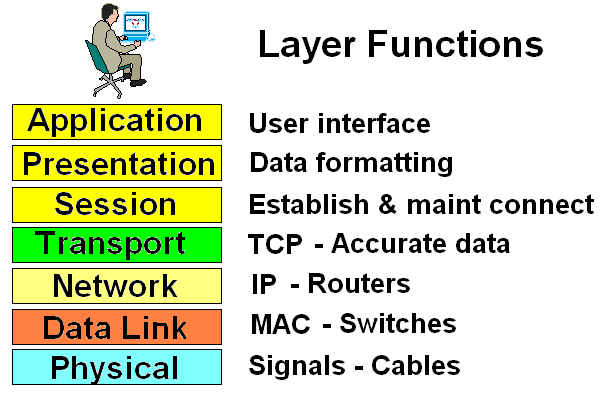The open systems interconnection (OSI) model began as a reference model, but has since been implemented. It was created by the International organization for standardization (ISO) to provide a logical framework fro how data communication processes should interact across networks. Standards were created for the computer industry allowing different networks to work together efficiently.
There are 7 layers in the OSI model. Each layer is responsible for a particular aspect of data communication. For example, while another layer may be responsible for error checking during transfer.
The layers of the OSI model are divided into two groups: the upper layer and lower layer. The upper layers focus on user applications and how files are represented on the computers prior to transport, for the most part, network engineers are more concerned with the lower layers. It’s the lower layers that concentrate on how the communication across a network actually occurs.
Application Layer: provides network services to user application. It is responsible for exchanging information between programs running on the machine, such as an e-mail program, and other services running on a network, such as a print server or another computers application.
Presentation Layer: concerned with how data is converted and formatted for data transfer. Examples of format conversions include ASCII text for documents and gif and JPG for images. This layer performs code conversion, data translation, compression and encryption.
Session Layer: determines how two devices establish, maintain and manage a connection – how they talk to each other. These connection are called sessions.
Transport Layer: Responsible for breaking the data into segments, establishing an end-to-end logical connection between machines, and providing for error handling.
Network Layer: Responsible for determining addressing on the network, determining the routes that information will take on its journey. And managing network traffic congestion. Data at this level is packaged into packets.
Data Link Layer: provides the link for how data, packaged into frames is communicated through hardware to be transported across a medium. It communicates with network cards, manages physical layer communications between connecting systems and handles error notification.
Physical Layer: specifies how data is processed into bits and physically transferred over medium, such as cables. It’s responsible for activating and maintaining the physical link between systems.

